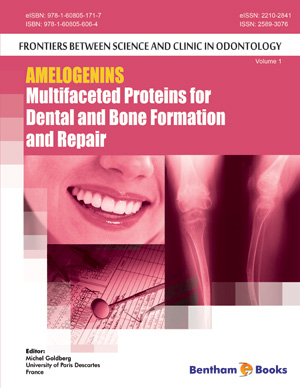Abstract
The amelogenin gene (AMELX) was the first extracellular enamel matrix coding gene to be discovered. Mutations in AMELX cause a variety of changes in the amelogenin protein that cause abnormal enamel formation. The resulting clinical phenotypes are diverse and are referred to as amelogenesis imperfecta (AI). To date, fourteen allelic AMELX mutations have been described that purportedly result in markedly different expression and types of amelogenins. Interestingly, the different protein domains affected by distinct AMELX gene mutations result in unique and functionally altered amelogenin proteins that are associated with several rather distinct AI phenotypes. The AMELX mutations and associated phenotypes fall generally into three categories. Mutations (e.g. signal peptide mutations) causing a total of loss of amelogenin protein are associated with a predominantly hypoplastic phenotype (though mineralization defects can also occur). Missense mutations affecting the Nterminal region, especially those causing changes in the putative lectin-binding domain and Tyrosine Rich Amelogenin Protein region that contains several critical protease cleavage sites, result in a predominantly hypomineralization / hypomaturation AI phenotype with enamel that is discolored and has retained amelogenin. Mutations causing loss of the amelogenin C terminus result in a phenotype characterized by hypoplasia. The phenotype – genotype correlations indicate there are important functional domains of the amelogenin molecule that are critical for the development of normal enamel structure, composition and thickness and that perturbations in these different domains can result in different clinical phenotypes.
Keywords: Enamel, Amelogenin, Gene, Hereditary, Hypoplasia, Hypomaturation, Hypomineralization






















